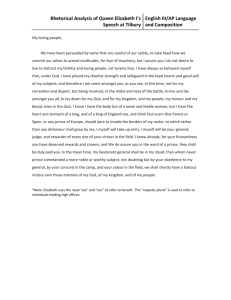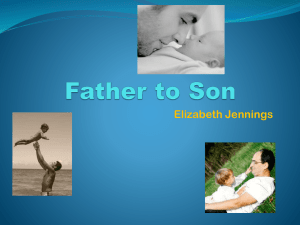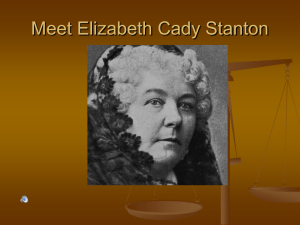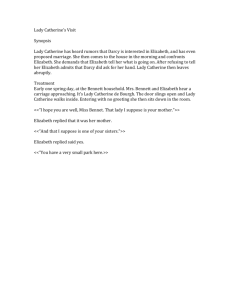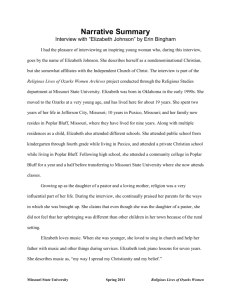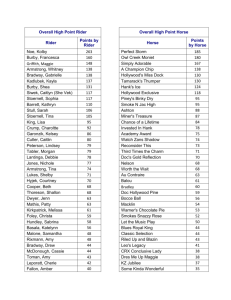Developing Language - Transcript
advertisement
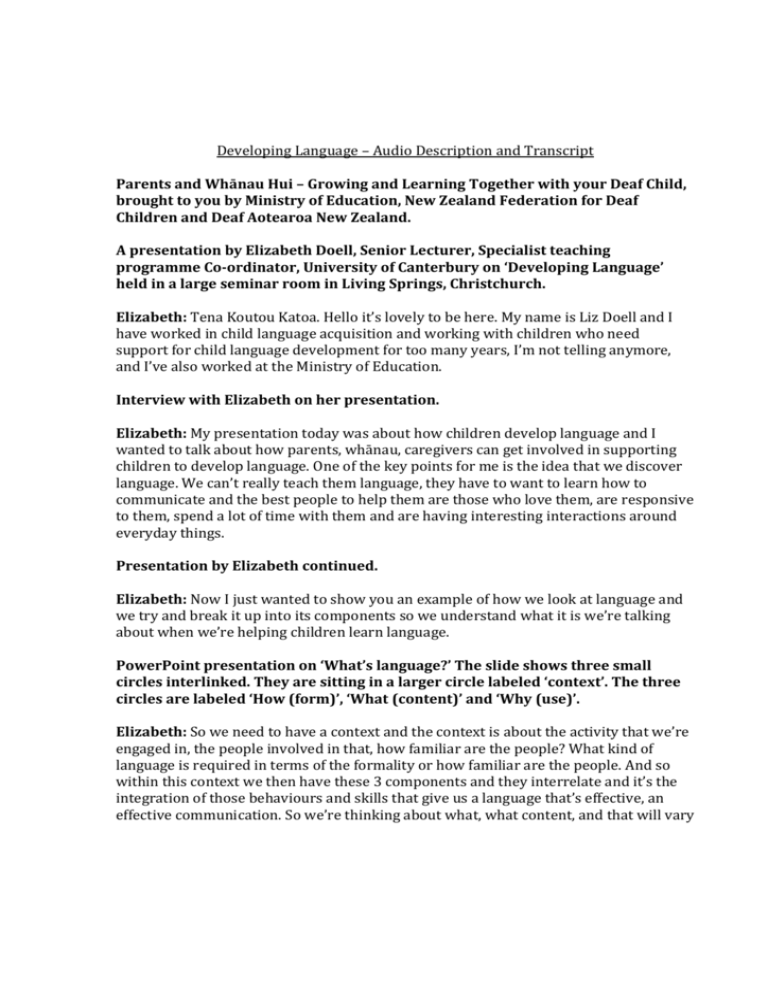
Developing Language – Audio Description and Transcript Parents and Whānau Hui – Growing and Learning Together with your Deaf Child, brought to you by Ministry of Education, New Zealand Federation for Deaf Children and Deaf Aotearoa New Zealand. A presentation by Elizabeth Doell, Senior Lecturer, Specialist teaching programme Co-ordinator, University of Canterbury on ‘Developing Language’ held in a large seminar room in Living Springs, Christchurch. Elizabeth: Tena Koutou Katoa. Hello it’s lovely to be here. My name is Liz Doell and I have worked in child language acquisition and working with children who need support for child language development for too many years, I’m not telling anymore, and I’ve also worked at the Ministry of Education. Interview with Elizabeth on her presentation. Elizabeth: My presentation today was about how children develop language and I wanted to talk about how parents, whānau, caregivers can get involved in supporting children to develop language. One of the key points for me is the idea that we discover language. We can’t really teach them language, they have to want to learn how to communicate and the best people to help them are those who love them, are responsive to them, spend a lot of time with them and are having interesting interactions around everyday things. Presentation by Elizabeth continued. Elizabeth: Now I just wanted to show you an example of how we look at language and we try and break it up into its components so we understand what it is we’re talking about when we’re helping children learn language. PowerPoint presentation on ‘What’s language?’ The slide shows three small circles interlinked. They are sitting in a larger circle labeled ‘context’. The three circles are labeled ‘How (form)’, ‘What (content)’ and ‘Why (use)’. Elizabeth: So we need to have a context and the context is about the activity that we’re engaged in, the people involved in that, how familiar are the people? What kind of language is required in terms of the formality or how familiar are the people. And so within this context we then have these 3 components and they interrelate and it’s the integration of those behaviours and skills that give us a language that’s effective, an effective communication. So we’re thinking about what, what content, and that will vary according to how complex the situation is or whether it’s just bath time at home. The why is our motivation, that is so important. We have to have a reason to communicate, to use language and so we need to think a lot about motivation when we’re engaging children and language learning. And the how is the form, so it could be words, it could be written language, it could be signing, it could be any of the languages that we speak. Interview with Elizabeth continued. Elizabeth: There’s about four things to think about and the first tip or strategy is, talk about what your child’s interested in. So it’s really important if your child’s focused on an activity or thinking about something, that you give them the language to go with it, rather than take their attention into something totally different. Presentation by Elizabeth continued. Elizabeth: What we know is that if a child is thinking or doing something, then their brain power, their cognition is centred on that and if you come in then and say ‘Oh, tell mummy what happened on the way to school today’ that’s not what they’re thinking about, they’re thinking about doing and it’s important that we stay on that topic and provide them with language that’s focused on what they’re doing and what they’re totally absorbed in at the time. Interview with Elizabeth continued. Elizabeth: The second thing is that we really want a balanced conversation, so that we want not to be dominating as adults. It’s easy to dominate when your child is perhaps not expressing as often as you’d like them to. But to actually allow them time to initiate. Presentation by Elizabeth continued. Elizabeth: So we want children to be active in our interactions with them, not passive. We want them to participate by initiating turns, by asking questions, by making comments, and too often we tend to dominate as adults and ask the questions and expect the child to respond or give instructions and expect them to do things. Interview with Elizabeth continued. Elizabeth: So it might not be that they’re using words to ask a questions, but it could be that they’re looking at something enquiringly or that they’re pointing to something and we need to be sensitive to those. They’re actual turns in the interaction and we can build on those. And to do that, the third thing is we have to wait. Presentation by Elizabeth continued. Elizabeth: And so if our children are not talking back to us or not interacting with us, we do tend to provide more language. We have to go against that tendency and wait for a response. It might not be the response you’re expecting, you know, you might’ve been looking for a word but you might get a look or a gesture or a sign you were not expecting if you wait. And we know that just by waiting, children will produce more responses and they’ll contribute more to conversations. Interview with Elizabeth continued. Elizabeth: The fourth component is how do you model the language? And so modeling is really important because you need to connect to what the child’s doing and help them to remember words so that they can understand them in the future and use them. Presentation by Elizabeth continued. Elizabeth: The first thing we need to think about is how are we going to contextualize the language? So it’s got to be something familiar the child can connect to and those connections are laid down in the storage area of our brain so that when we need to remember that word again, we’ve got these connections to help us and they happen in split seconds, So you know that ‘tip of the tongue’ idea when you think ‘oh I know that word’, and then someone will say something about where they’ve seen whatever it is you’re trying to remember and you think ‘yep, go it’ because those connections are laid down neurologically. An interview with Sara Pivac Alexander, Lecturer, Deaf Studies Research Unit, Victoria University. Sara (signing): The essential thing is to provide language stimulation to the child, whatever form that takes. The priority is for as much exposure as possible. The child can try different things, and choose a path that works for them, which is fine. The important thing is to give them the language exposure that their growing brains are craving at that time. Parents sometimes think that their child is not ready for these multiple languages but we were saying they are absolutely ready for more than one language. Interview with Elizabeth continued. Elizabeth: The take home message for parents is whatever language is effective for your child is the one to be using with them and I think the interest that we have now in New Zealand Sign Language means that they’ll be more opportunities for children to have choices in terms of spoken language and sign language and the willingness of parents to actually learn sign language and to provide that as an option for their child is amazing and quite a change in the last 10 years I’ve noticed. PowerPoint on Top Tips for ‘Developing Language’. Top Tips: Start young. Talk about what your child is interested in – comment on what they are looking at or doing. Balance the conversation – try to take equal turns in interactions with your child. Let them be live participants – pause and wait for any response, a look or reach can be considered a conversational turn. Model language use – at the right level for your child e.g. through words/signs/gestures. Make connections to their prior experiences and learning. Your willingness to learn and support NZSL creates opportunities for using language. Get down to your child’s level, be face to face. Ministry of Education logo, Deaf Aotearoa New Zealand logo, NZ Federation for Deaf Children logo.

